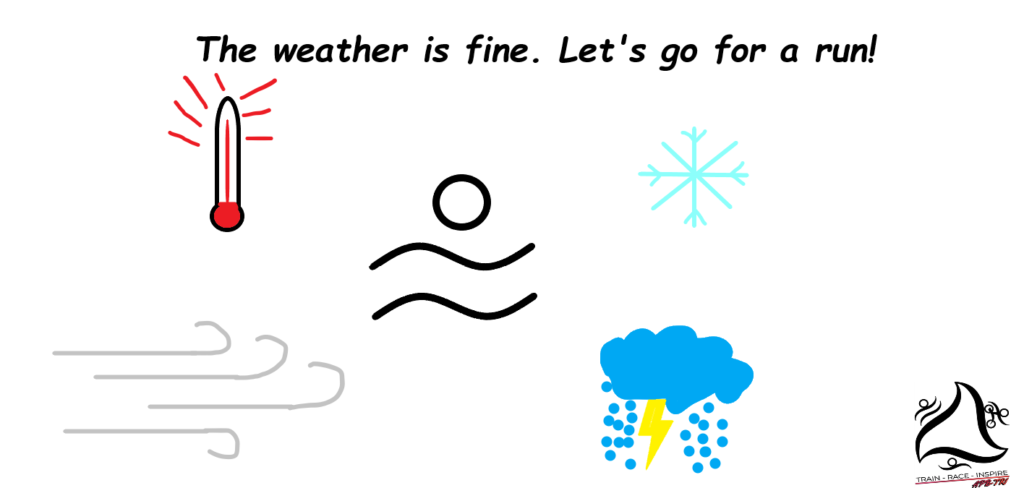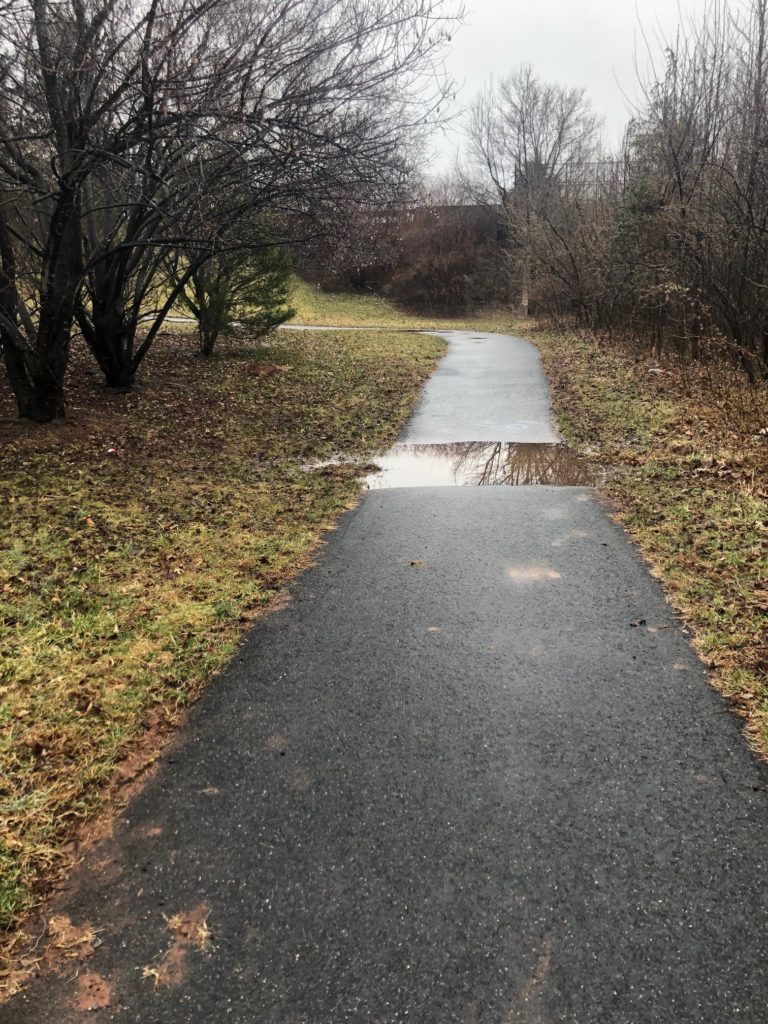A few months ago, I wrote about dealing with heat when you go for a run. As it happens, I live in a place where the summers get very hot, but winters are cold and it snows occasionally (some years we are buried in snow, while others we get pretty much none). So even though I say:

Just as with heat, you need to plan correctly for the cold.
First of all: it’s not 100% true it’s never too cold to go for a run. It can get too cold. Just think of that polar vortex that hit Chicago last winter! I looked up what meteorologists said back then and they advised against running when the temperatures are below -20F (-29C) – and that’s with windchill included. Personally, I love the cold, but I may call it quits way earlier than this… If you feel your exposed skin going numb or hurting, it’s a good sign that you need to go into a warm place, like now. Cold can impact variety of health issues, so be careful in general. I did learn something positive though: I always worried about that shortness of breath caused by the cold when I run in freezing weather. Apparently it’s normal and goes away after a few times. If the name of the game is just toughing it out a couple of times, I’ve got it!

Another qualification I would like to add is road conditions. When doing my research, I got to read opinions by a man who goes for runs waist-deep and was describing equipment for running on icy surfaces. Personally, I give myself (and anybody else who feels a need for one) permission for skipping an outdoor run when there are hazardous road conditions. You should also keep in mind that if you need to run anywhere near cars, danger goes up fast, since their ability to maneuver and respond quickly is limited by snow and ice. And if you are faced with waist-deep snow: how about cross country skiing?

Speaking of safety: you need to ensure your own visibility. Winter days are shorter and in many parts of the world, the sun isn’t that bright, either. Wear plenty of lights and wear reflective clothing. Hey, Christmas is around the corner – pretend you are the Christmas Tree 😜
Now that we know what the limitations are (at least to me) to being able to run outside, let’s see what else is there to freezing your butt of for the sake of a run.
First of all, you can tell yourself that there is a cup of hot chocolate at the end of the run 😉. They do say you should give yourself a carrot when you have a hard time getting out the door… Ok, so that one is artificial – you can get yourself a cup of hot chocolate whether you run outside in the cold or not. But it makes for a nice reward, doesn’t it? I’d argue it tasted better when you are warming up after a cold run, though. Also: it’s a good idea to warm yourself as soon as you are done. For once, you can have both:

So maybe hot chocolate is a better idea, especially if it’s not the very end of the day, but you get the idea 😉
Here is another nice thing about running in the cold: you are not overheating like you were during those awful hot months! Isn’t it a nice change? Just remember that you still need to drink water. You may not be sweating nearly as much as you do when it’s hot, but you are still losing water. Think of it like you do about swimming: you may not feel yourself getting dehydrated, but it doesn’t mean you aren’t. I know what my issue is with drinking water on a very cold day, as I had it just this morning: the water gets ridiculously cold and you don’t want to drop your body temperature any further. I have two possible solutions. One of them: maybe I could wear a water belt under my jacket? It sounds relatively good, except I really don’t want to be opening or lifting any of my clothes when it’s that cold. Another is the opposite of what I do in heat. When it’s really hot, I pack my water bottle with ice. So maybe when it’s cold, take warm/ hot water with you? It will probably get cool by the time you start drinking. Additional benefit of a warm bottle to carry when it’s freezing outside: during those early miles, when you are still not warmed up thoroughly and your hands are feeling cold, you can use it to warm up your hands.
My favorite benefit of running when it’s cold: being alone on the road! When it’s warm and sunny, I see mad crowds on the bike path during ‘peak hours’, which are every morning, evening and all days on weekends. It’s runners, walkers, cyclists, kids… You name it, they are out there. You have to make sure you pay attention to what other people are doing on the road. Ok, you always should be aware of your surroundings. But you won’t be getting passed by cyclists every couple of minutes while dodging a dog on a too-long leash. It’s just you and the road. Peace and quiet. It’s amazing! I read somewhere that running outside helps beat SAD (seasonal affect disorder). I can totally see how even the little bit of sun on your face can make a difference! And then there is that little matter of endorphins, too 😉

My PR marathon was also the coldest marathon I ran in. It started below freezing, but warmed up nicely later. As you have seen in my post about running in the heat, you slow down when it’s hotter. Flip side: you get faster when it’s cooler. Well, up to a point. When it’s freezing, you slow down again. Cold takes a toll on your body, just as humidity and high temperatures. On those coldest days of the year, just try to run during the warmest parts of the day and decrease distance and intensity of the runs.
Whether you are all pumped up for your wintery run or grudgingly head out the door, here is a couple of pieces of advice to keep in mind (in addition to items mentioned above):
Dress accordingly to the weather: in case of runs in the cold weather, it means planning for 10-20F over the temperature with windchill. You don’t want to be freezing the whole time, but you don’t want to be sweating like crazy, either. It’s actually best to wear layers and include some zippers in your wardrobe, so you can shed items of clothing when necessary and possibly unzip stuff to vent out the heat. Socks will matter a lot as well. When I ran in Philly, my feet actually froze and then were thawing out as I was running. You know how it’s painful when that happens when you get home? It’s many times worse when you have to keep pounding those frozen feet against the pavement. Case in point: just the other day, I got dressed for a morning run like this:

And it was cold. Except not that cold and I ended up sweating like crazy! So the moment I stopped, I was soaked and freezing.
Speaking of clothing: cover your extremities. Think gloves. There are so many types out there and they are really priceless. You don’t want to risk frostbite! Your fingers are likely to be at most danger for that. Hats/ beanies/ headbands/ earmuffs are a good idea, too. I have known people who would ski without covering their ears who came to regret it. Don’t be like them, protect your ears!
Make sure your socks are nice and warm, too. You want to make sure that they will still allow for ventilation though. If your feet get overly sweaty, they are likely to get cold soon after and that just wouldn’t be good.
Shoes – the ones with better traction are preferable, especially in snow is involved. You don’t want to sleep, do you? Mesh isn’t your friend, either, since it allows cold air to flow freely to your feet. I am pretty sure I don’t have to explain why that’s not ideal…
Enough about clothes! Time to talk about things to do before you leave. Warm up properly before leaving for a run. This will help you not start freezing immediately when you step outside and by the time that wears off, heat from running will keep you warm. Your muscles will also be looser, helping prevent muscle and joint injuries.
There is something to be said for choosing your route wisely, too. Try to go places where you can get help easier in case you need it. I always feel like it’s a good advice, but it’s especially important when waiting for help can be a problem. When it’s cold, every minute may count. You will also want to avoid wind. Maybe there are routes shielded from the wind? Well, if you can’t avoid wind altogether, at least try to finish your run with back wind. This will decrease its speed relative to you. It’s important because wind can steal your heat. It’s bad enough in the beginning of your run, but towards the end, when you are already all sweaty and tired, it can be flat out brutal.
Make sure to end close to home or some place warm. You will want to go inside and warm up with a hot beverage and change out of sweaty clothes. You will already be getting chilly from being out in the cold, you don’t want to prolong that misery!

Last but not least: keep moving! This is something I have to keep in mind when I run to work. There is a lot of road crossings and lights involved and I have to stop every time. That’s not great and it’s best to avoid those situations. You get cold pretty fast once you stop moving. That can be unpleasant or even dangerous. Don’t catch a cold – avoid stopping.
Do you now feel armed in knowledge needed to conquer running in the cold? I hope so. Last thing to keep in mind: HAVE FUN!!!
Visit our shop for cool triathlete merchandise!
Subscribe to receive updates and exclusive content!
